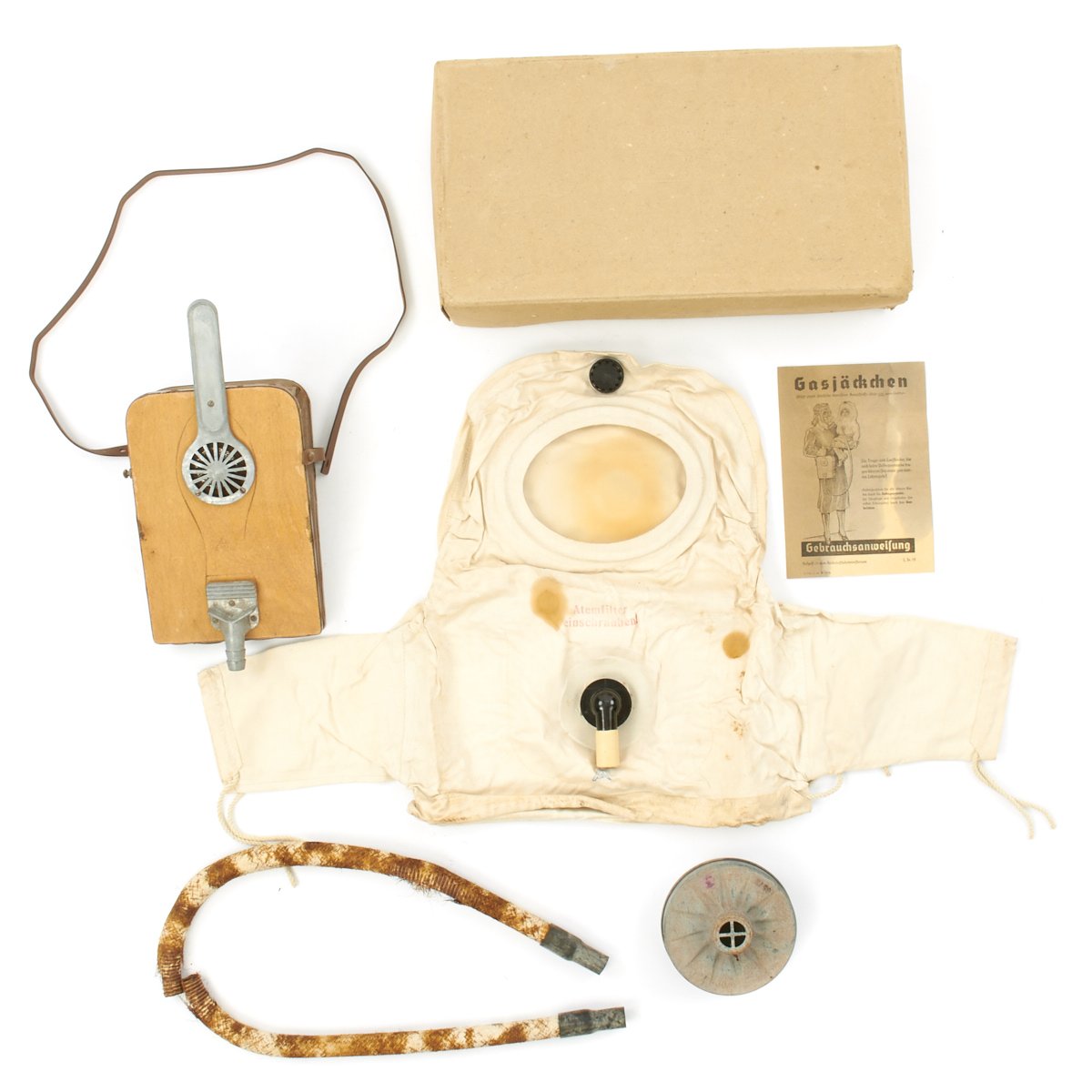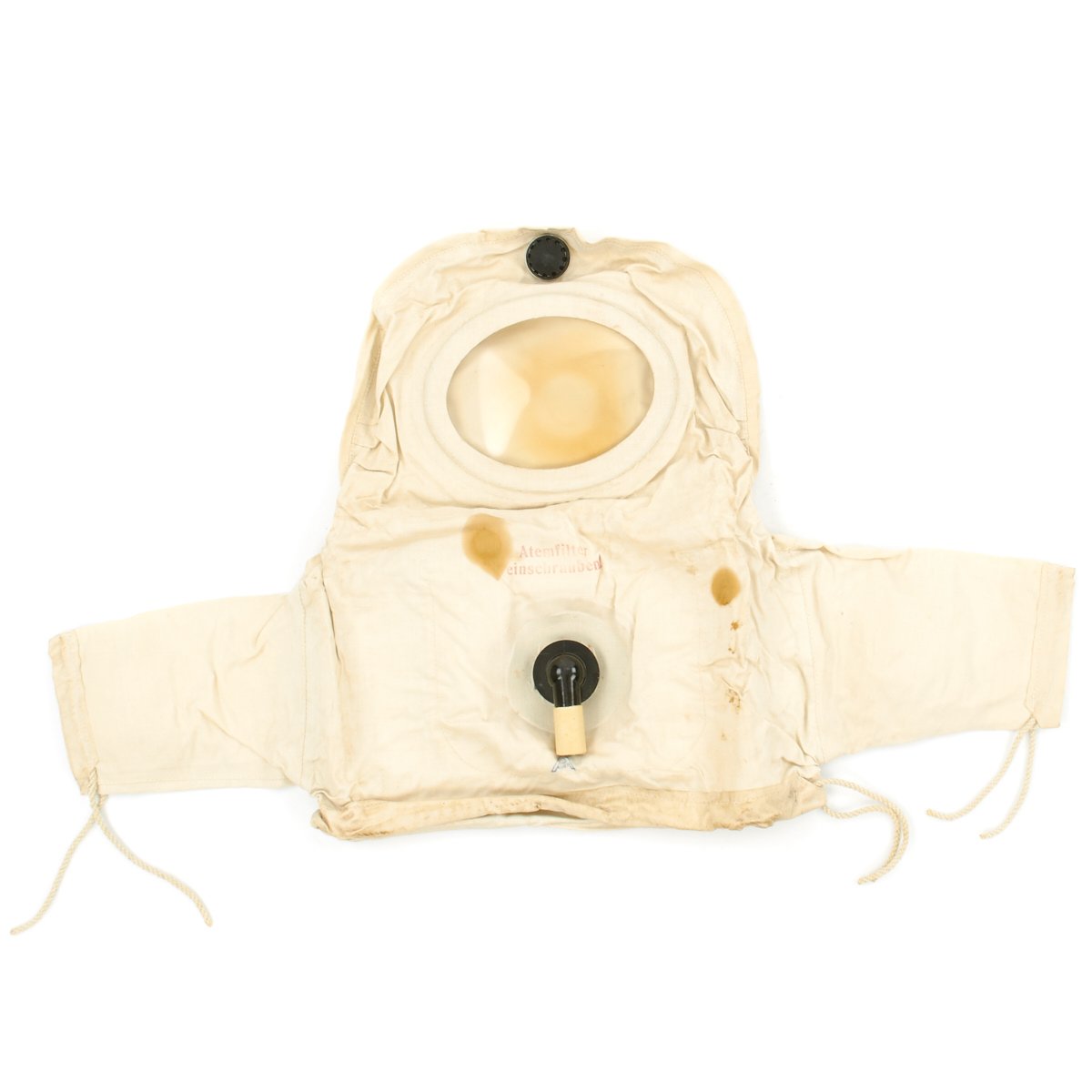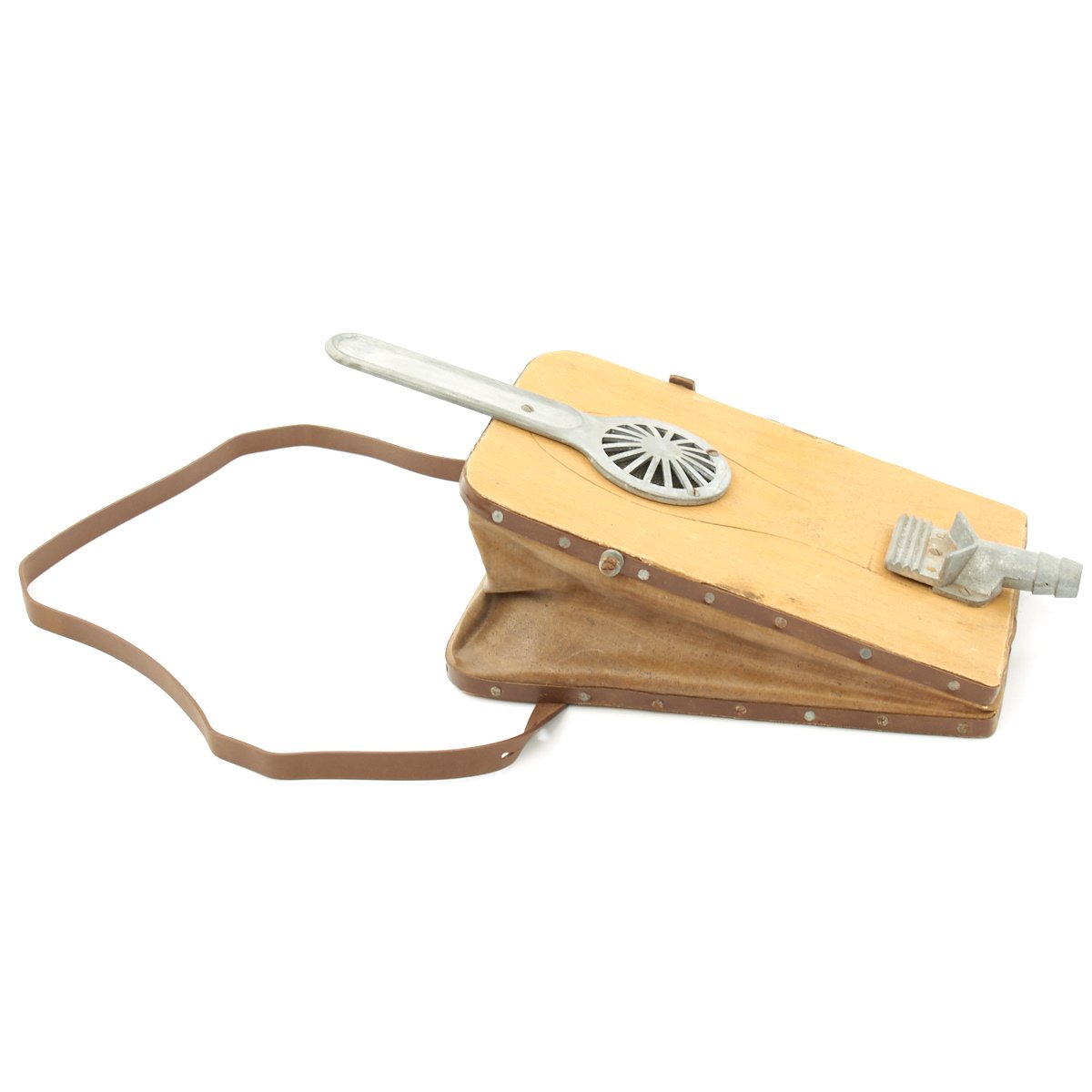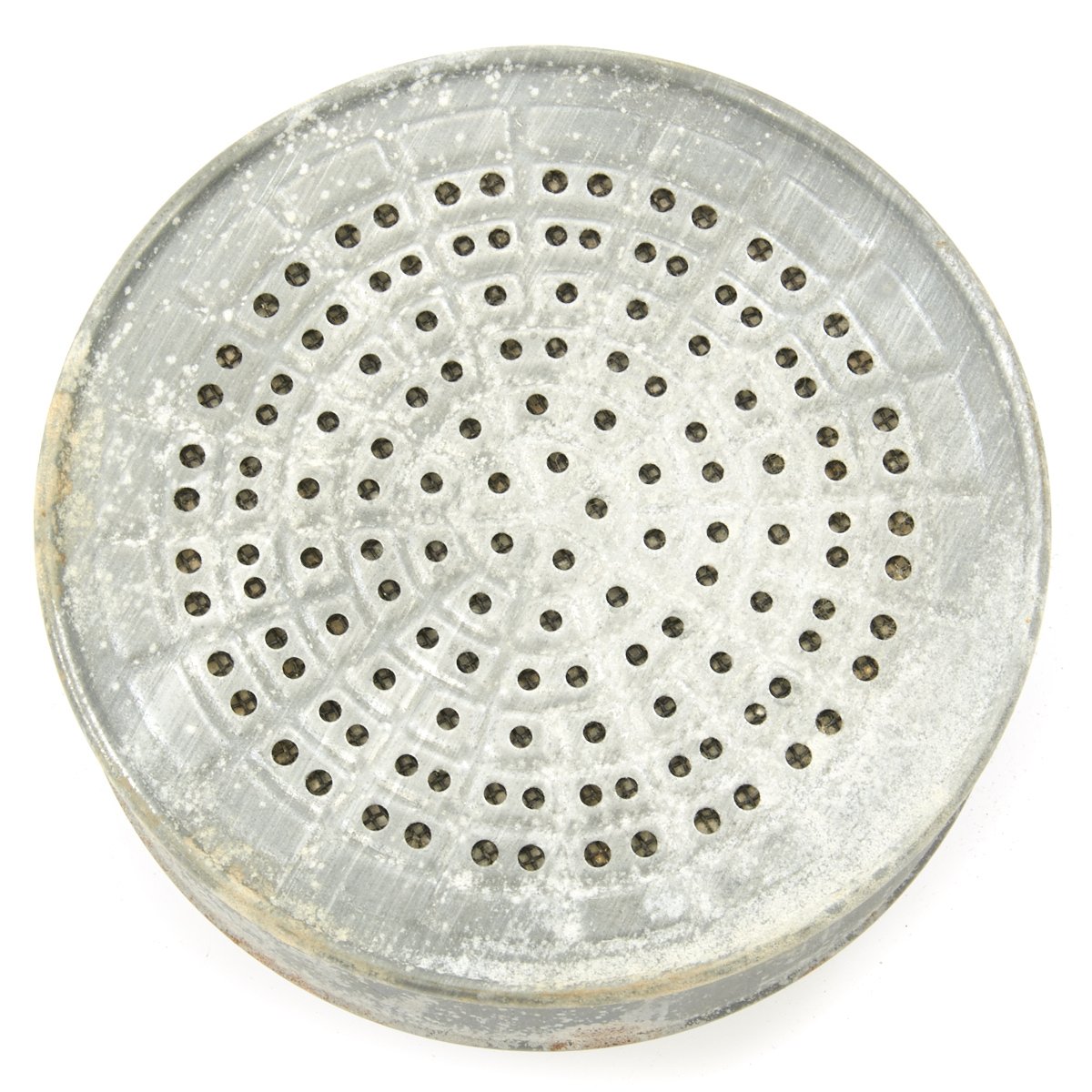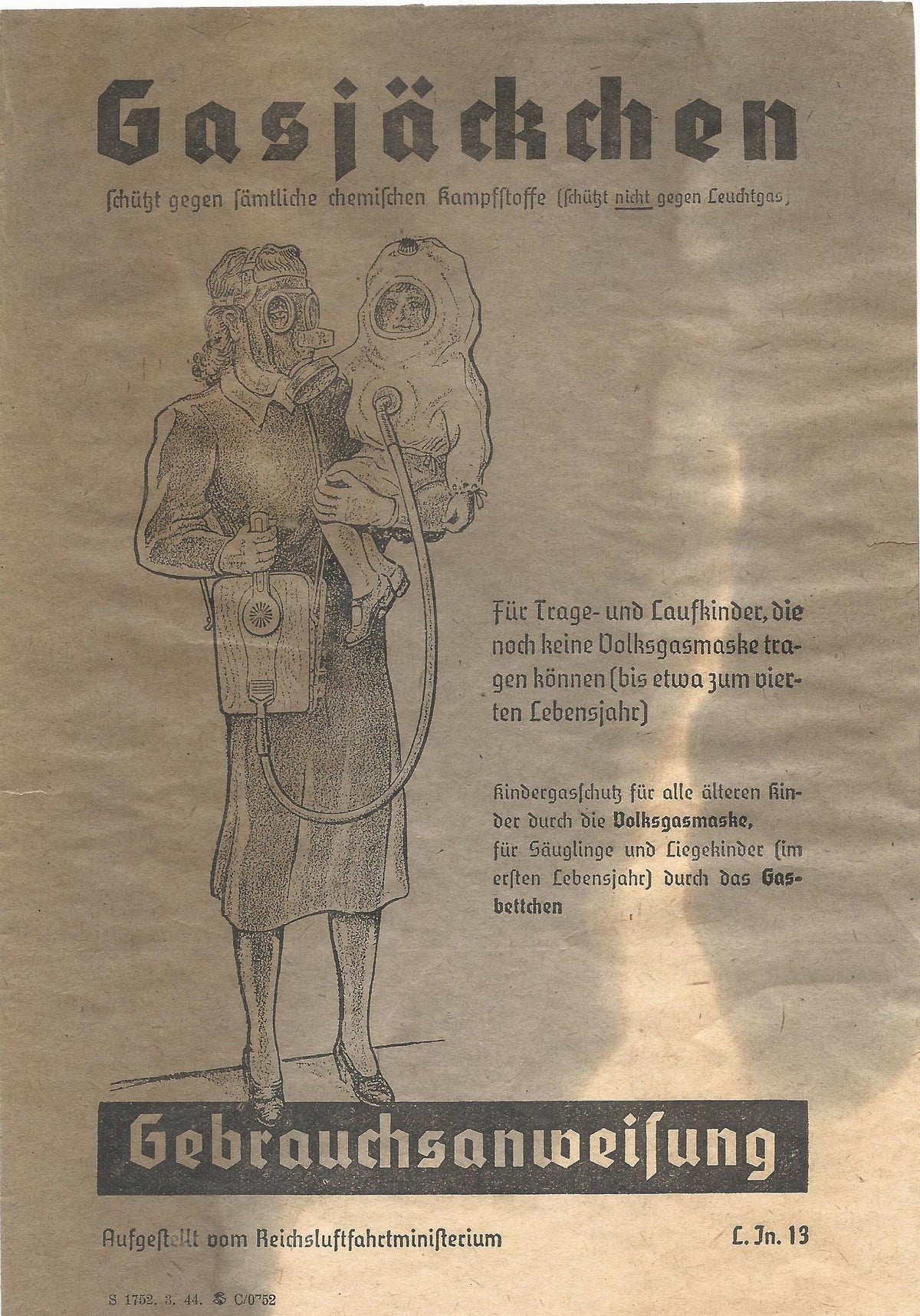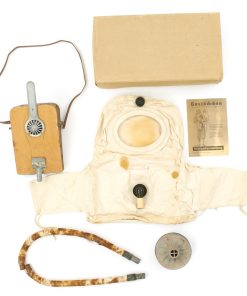Original German WWII Gas Jacket Hood for Small Children by Auer with Box and Manual – Gasjäckchen Original Items
$ 395,00 $ 118,50
Original Item: Only One Set Available. This is the first time we have offered one of these! This is an very good condition German WWII Gasjäckchen (Gas jacket / hood) manufactured by AUER, complete with an original filter, hose, and bellows. All components have their correct German WWII inspection stamps, and there is also an original manual. The components are all contained in their original cardboard issue box, which is embossed on the top:
Gasjäckchen
RL1 39/49
Vertrieb gemäß
§ 8 Luftschutzgesetz genehmigt
This roughly translates to “Distribution approved in accordance with the Air Protection Act Section 8”. Below this is the marking for AUER, indicating manufacture by Auer-Gesellschaft AG, Werk Oranienburg, who also manufactured many military issue gas masks. The condition is very good to excellent for all components, except for the hose that attaches to the jacket. The rubber and metal wire construction unfortunately has deteriorated quite far over the years, and it is very delicate, having already broken in the middle.
The Gas Jacket was first introduced in 1940, and the concept behind it was very simple: babies tend to be (relatively) compliant, and could be easily kept in a “gas crib,” while young children/toddler could be quite difficult to handle. A larger gas crib or a smaller gas mask would not really work. In order to bridge the gap between the Gasbettchen (gas cot) and the standard civilian gas masks, the Gasjäckchen was developed. It was produced in two main styles, and they were provided for all children up to and including the age of four.
The jacket/hood was made of rubberized cloth, and would have the air intake and filter on either the front or the back side of the jacket. This example has the filter and intake on the front, however Auer also made examples with rear filters. This jacket has Atemfilter einschrauben! (Screw in the breathing filter!) in red on the front, so that the parent remembers to install the filter. The air output valve was above the face visor on the front of the jacket for both types. The jacket had drawstrings by which the sleeves and waist were sealed in order to protect the occupant from gas.
The filtration was achieved by means of a standard civilian filter, attached by means of simply screwing it directly to the air hose output inside the jacket. Air was supplied through a set of bellows, which the parent (most usually the mother) would operate. The bellows had a convenient shoulder strap, so the wearer could put it under their arm, and easily continue supplying fresh air to the child.
Definitely an interesting Civic Issue item from WWII. Boxed up and ready to display!
Fast Shipping with Professional Packaging
Thanks to our longstanding association with UPS FedEx DHL, and other major international carriers, we are able to provide a range of shipping options. Our warehouse staff is expertly trained and will wrap your products according to our exact and precise specifications. Prior to shipping, your goods will be thoroughly examined and securely secured. We ship to thousands clients each day across multiple countries. This shows how we're dedicated to be the largest retailer on the internet. Warehouses and distribution centres can be located throughout Europe as well as the USA.
Note: Orders with more than one item will be assigned a processing date depending on the item.
Before shipping before shipping, we'll conduct a thorough inspection of the items you have ordered. Today, the majority of orders will be delivered within 48 hours. The delivery time will be between 3-7 days.
Returns
The stock is dynamic and we cannot completely manage it because multiple stakeholders are involved, including our factory and warehouse. So the actual stock may alter at any time. It's possible that you may not receive your order once the order has been made.
Our policy is valid for a period of 30 days. If you don't receive the product within 30 days, we are not able to issue a refund or an exchange.
You can only return an item if it is unused and in the same state as the day you received it. You must have the item in its original packaging.
Related products
Uncategorized
Uncategorized
Armoured Fighting Vehicles of the World: AFVs of World War One (Hardcover Book) New Made Items
Uncategorized
Armored Burgonet Helmet & Polearm from Scottish Castle Leith Hall Circa 1700 Original Items
Uncategorized
Uncategorized
Uncategorized
Uncategorized
Uncategorized
Uncategorized
Australian WWII Owen MK1 Machine Carbine SMG Custom Fabricated Replica with Sling Original Items
Uncategorized
Uncategorized
Uncategorized
Uncategorized
Uncategorized
Angolan Rebel 1970s era 60mm Inert Display Mortar from Angolan Civil War Original Items
Uncategorized
Uncategorized
Uncategorized
